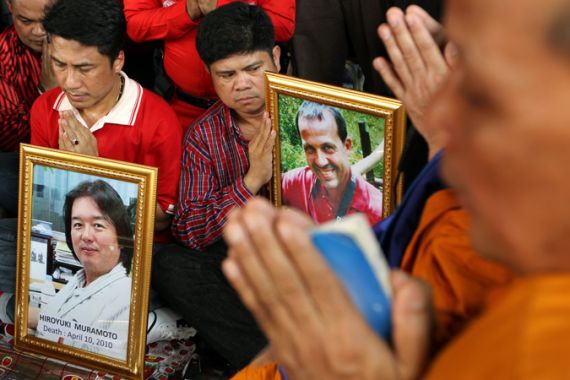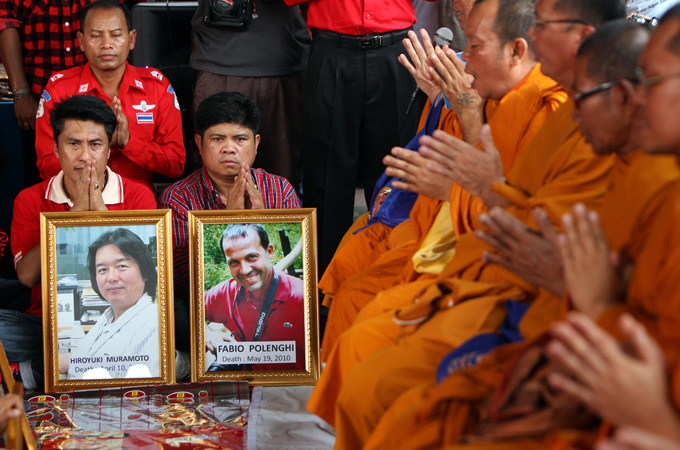Ending impunity in South Asian media killings
Violent crimes against journalists and media workers who expose corruption and injustice are common.

 |
| Judicial processes that protect journalists are weak and the perpetrators are seldomly brought to justice [EPA] |
Southeast Asia has unfortunately earned a reputation for not being a safe place for journalists. The threats? Pick a card. They range from imprisonment for crimes in outdated libel and slander laws, detention without trial, violence against media personnel, and impunity in the killing of journalists.
It is no coincidence that journalists who face risks are those whose stories have exposed weaknesses in the governance structures, lopsided distribution of resources, and the absence of accountability and transparency. These weaknesses affect the ability of citizens to enjoy all other fundamental rights, such as the rights to life, housing, public health, education, and livelihood, among others.
Typical advice given to journalists is that there is no story worth risking one’s life. But lives have been lost in the course of journalists doing their jobs. Only a small portion of the murders have seen the light of day in the courts because of the extent to which the culture of impunity has taken root.
Impunity is when the perpetrators of killings, be that of journalists or human rights activists or lawyers, are not investigated or brought to justice. That violence and impunity are staking a claim in peaceful democracies should make us jump out of our seats and stop them in their tracks here and now. Its a zero sum game: every unpunished crime means a win for the killer, representing powerful individuals or the state or businesses; and zero for the public, now deprived of its right to information. The cold-blooded murder of Ms Marlene Esperat in the Philippines in 2005 is a case in point.
As a member of the local ombudsman’s office and then as a journalist, Esperat was persistent in her fight against corruption, and obviously came too close to the truth. Esperat, who had worked with the Department of Agriculture in Central Mindanao, in the Philippines, went into journalism and wrote for the local Midland Review, and had exposed a fertiliser scam and other wrongdoings involving the agriculture department. She was killed in front of her children while having dinner at home on March 24, 2005. The suspects in the murder admitted they were hired to kill her. The price for the kill was $3,000.
After six years of back and forth court haggling, finally the masterminds in Esperat’s case will face trial. It’s still a long way away from closure for her family, but a step in the right direction nevertheless.
Yet the darkest day in Asian media’s recent history was November 23, 2009, in the Maguindanao province in the southern Philippines. Some 58 people – including 32 media workers – on their way to register election candidacies were brutally massacred by the paramilitary of the politically entrenched Ampatuan clan. To date, close to two years after the worst incident of extrajudicial killings in the Philippines’ history, 196 people have been charged. Of these, only 93 – including several members of the Ampatuan family – are currently detained and 64 are standing trial, proceedings which have been marred by delays, the deaths of witnesses, alleged bribes and threats to the plaintiffs in a bid to have them drop charges.
The killings forced not only Filipinos, but the international community, to see the extent to which we have collectively sanctioned crimes against the media. The impact on families and societies linger years after the crimes have occurred, and deeply entrenches the culture of fear.
But the Philippines is not the only country with the problem of impunity. The conditions that lead there – widespread corruption, a weak judiciary, poorly developed enforcement agencies, and weak legal frameworks – exist throughout the region.
In Thailand, two foreign journalists – Hiro Muramoto and Fabio Polenghi – were killed while covering the political conflict in 2010, but those responsible for the deaths have not been prosecuted. Cases of disappearances and extrajudicial killing of human rights lawyers, environmentalists and labour activists point to a bigger problem in Thailand, with the inability or lack of political will of the state and its enforcement agencies in bringing criminals to justice. In Indonesia, 63 per cent of journalists murdered in 2010 were believed to have died at the hands of government officials – and 75 per cent of the cases remain unsolved, according to data from the Committee to Protect Journalists (CPJ).
The solution to the threat of impunity does not lie solely with governments and politics, although much is in their hands. Media owners are as much responsible for the safety of their staff as the individual journalists themselves. Above all, the fight to end impunity is a fight of the people who must hold their governments accountable and demand for justice in these heinous crimes.
Gayathry Venkiteswaran is Executive Director of the Southeast Asian Press Alliance. The November 23 International Day to End Impunity is a global campaign organized for the first time this year. It marks the anniversary of the Maguindanao massacre.
The views expressed in this article are the author’s own and do not necessarily represent Al Jazeera’s editorial policy.
